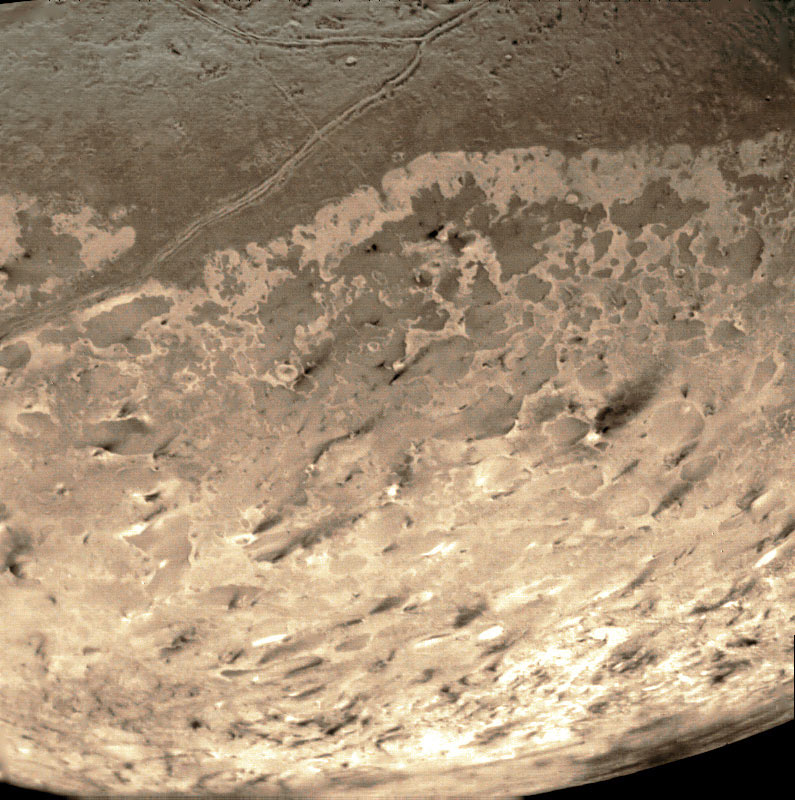Triton Hopper on:
[Wikipedia]
[Google]
[Amazon]
 ''Triton Hopper'' is a proposed NASA lander to
''Triton Hopper'' is a proposed NASA lander to
Exploring Neptune's Captured Kuiper Belt Object
a short NASA video at YouTube {{Neptune Proposed NASA space probes Missions to Neptune Landers (spacecraft) Hopping spacecraft
 ''Triton Hopper'' is a proposed NASA lander to
''Triton Hopper'' is a proposed NASA lander to Triton
Triton commonly refers to:
* Triton (mythology), a Greek god
* Triton (moon), a satellite of Neptune
Triton may also refer to:
Biology
* Triton cockatoo, a parrot
* Triton (gastropod), a group of sea snails
* ''Triton'', a synonym of ''Triturus' ...
, the largest moon of Neptune. The idea is to harvest the abundant nitrogen ice on the surface of Triton and use it as propellant for multiple short flights and explore a variety of locations. The concept transitioned in March 2018 to Phase II to refine their designs and explore aspects of implementing the new technology.
History
Triton is the largestmoon of Neptune
The planet Neptune has 14 known moons, which are named for minor water deities in Greek mythology. By far the largest of them is Triton, discovered by William Lassell on October 10, 1846, 17 days after the discovery of Neptune itself; over a ce ...
. In 1989, ''Voyager 2
''Voyager 2'' is a space probe launched by NASA on August 20, 1977, to study the outer planets and interstellar space beyond the Sun's heliosphere. As a part of the Voyager program, it was launched 16 days before its twin, '' Voyager 1'', o ...
'' flew past the moon at a distance of 40,000 km, and discovered several cryovolcano
A cryovolcano (sometimes informally called an ice volcano) is a type of volcano that erupts volatiles such as water, ammonia or methane into an extremely cold environment that is at or below their freezing point. The process of formation is known ...
es on its surface. Triton is geologically active; its surface is young and has relatively few impact craters. It has a very thin atmosphere.
The ''Triton Hopper'' concept started Phase I in 2015, and it transitioned in March 2018 to Phase II, where the new technologies are being matured by NASA's Institute for Advanced Concepts ( NIAC).
Overview
The ''Triton Hopper'' concept proposes the use of a radioisotope rocket engine that would collect nitrogen ice on or below the surface, heat it under pressure and use it as propellant to explore Neptune's moon Triton. The largest technological challenge is to learn how to mine local surface nitrogen ice, and how to heat it for use as propellant. The rocket-powered hops are estimated to be up to 1 km high and 5 km long. A rocket-powered vehicle, or "hopper", has several advantages due to the variety of terrain and agravity
In physics, gravity () is a fundamental interaction which causes mutual attraction between all things with mass or energy. Gravity is, by far, the weakest of the four fundamental interactions, approximately 1038 times weaker than the stro ...
of only 8% of that of Earth. Hemispheric traverses and atmospheric sampling are possible during hops.
While airborne, the craft could acquire images and videos during flight. While on the ground, it could photograph and analyze the chemistry and geology of the surface. It could potentially fly through geysers on Triton's surface to analyze the material ejected from them.
See also
* Comet Hopper *Europa Lander (NASA)
The Europa Lander is a proposed astrobiology mission concept by NASA to send a lander to Europa, an icy moon of Jupiter. If funded and developed as a large strategic science mission, it would be launched in 2027 to complement the studie ...
* ''Trident'', a flyby proposal to Triton
References
External links
Exploring Neptune's Captured Kuiper Belt Object
a short NASA video at YouTube {{Neptune Proposed NASA space probes Missions to Neptune Landers (spacecraft) Hopping spacecraft